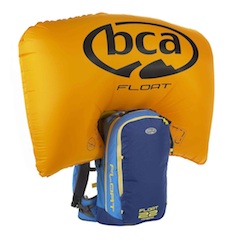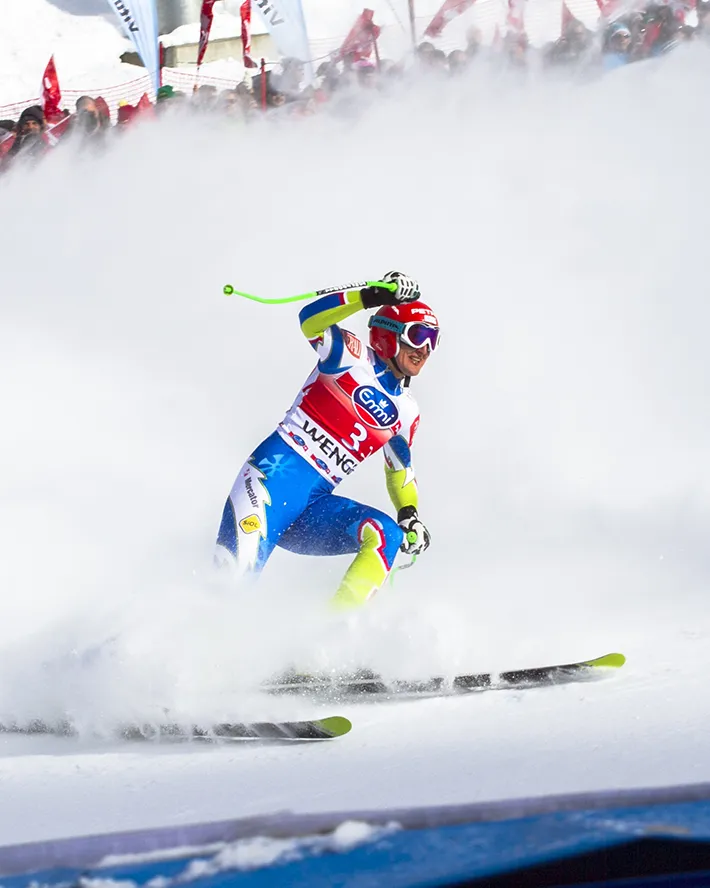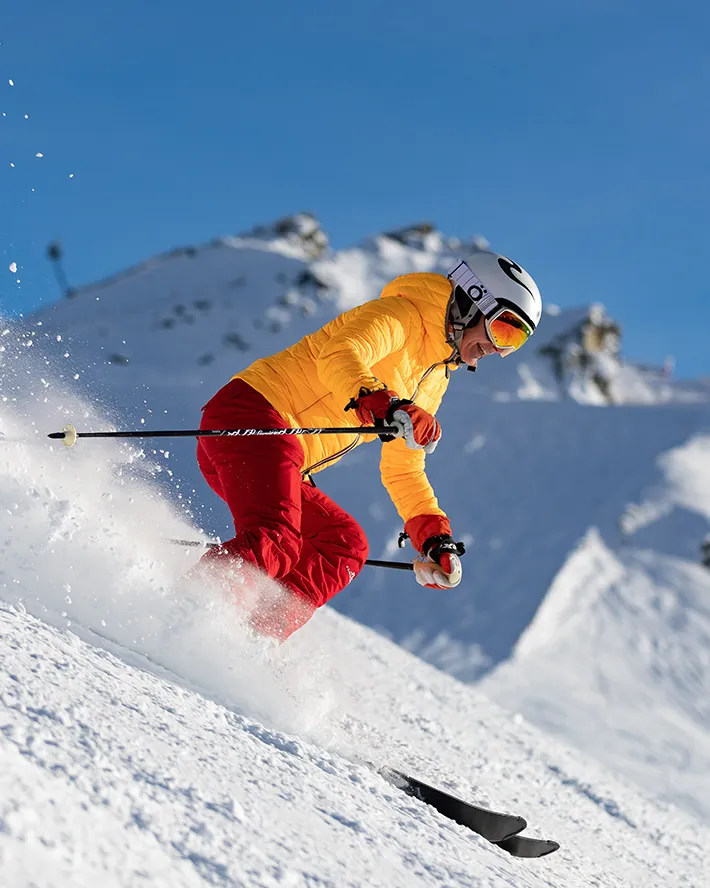Ski racing has a rich history dating back to the early 20th century, when the sport first began to gain popularity in Europe and North America. Over the years, many legendary ski racers have emerged, pushing the boundaries of what was thought to be possible and leaving a lasting impact on the sport. In this blog post, we will take a look at some of the pioneers who changed the game and helped shape the sport of ski racing into what it is today.
Avalanche Airbags: What do we know and what have we to learn?

Avalanche airbag backpacks have been with us for more than 20 years. A piece of kit that started off life as something of an eccentric novelty has passed through the stage of being worn only by snowsports professionals, to fast becoming established as a key part of the armoury of the recreational off-piste skier. In this blog I'll highlight what we know about avalanche airbags, focusing on how they work and examining the data on their effectiveness as an avalanche safety device. I'll also touch on some of the areas where there are still questions to be answered.
Avalanche airbags- what's the principle?
There's a common misconception (perhaps not helped by the names of some packs!) that avalanche airbags work by "floatation", or in other words by adding buoyancy to the wearer, much as a life jacket adds buoyancy in water. Fortunately this isn't true, as even wearing an airbag, humans are denser than many types of snow and so would sink if the moving snow of an avalanche behaved as a fluid. Instead, the key principle involved is called "inverse segregation". Here, larger objects tend to rise to the surface of a moving mixture of different sized particles, as found in an avalanche. You can observe this effect for yourself by shaking a pack of cornflakes- the bigger flakes rise to the top, while the smaller ones drop to the bottom of the box. This principle also underlies a frequent observation made with avalanches involving snowmobilers, where the snowmobile tends to come to a rest on the surface of the slide, while the rider is often buried. The key feature is size and volume, and a deployed airbag works by adding volume to the wearer. This means that the wearer is much more likely to end up on or near the surface of the avalanche. As burial depth is a key factor in avalanche survival, theoretically this should increase survival.
While we're on misconceptions, there's also a common misapprehension that the airbags are filled directly by the gas in the cylinders. As some cylinders are filled with nitrogen, this has lead to an urban myth (even in some cases propagated by articles for Ski Club of Great Britain!) that bursting of an inflated airbag under the snow could lead to nitrogen asphyxiation. Again this isn't true- the high pressure cylinder gas is used to harness the Venturi effect, to fill the bags with air, so the contents of the bag are quite harmless if released.
What are the data on the effectiveness of airbags on reducing avalanche death?
In assessing this question, we have two types of evidence available, which in quality can be ranked i) results from published studies in peer-reviewed journals, and ii) manufacturer's data. While the second type of data can be useful, it needs to be treated with caution as there is a natural desire on behalf of the manufacturer to present their product in the best light. So what do the studies show?
i) Data in peer reviewed journals. Surprisingly, only a single study addressing this has been published [1]. This study looked back on the effect of airbag backpack use in a sample of approximately 1500 people caught in avalanches in Austria and Switzerland and found that people equipped with an avalanche airbag had 2.9% chance of dying, versus an 18.9% chance of dying in those not equipped with an airbag backpack. This effect was statistically significant.
ii) Manufacturer's data. Here the company that have done most research is ABS, manufacturers of the first airbag system, who have collected data in conjunction with the Swiss Avalanche Institute in Davos. Their current statistics report on 249 avalanche accidents involving 362 people, 295 of whom were wearing an ABS backpack, and 67 of whom were not. 25% of the people who were not wearing ABS backpacks were killed by the avalanche, whereas approximately 3% of people with fully inflated airbags died, and this is the figure quoted in ABS sales literature. However, perhaps a more useful figure is that in total 6% of the people equipped with ABS backpacks died- the excess is because in more than half of those who died the avalanche airbag was not fully inflated, most commonly because the airbag was not activated or the cylinder was empty. This highlights the need for airbag maintenance, training in use and for research into the nature of the human factors that operate in the incorrect decision not to activate the airbag system.
Putting this together, the available published and manufacturer's data is relatively consistent, indicating that there is a statistically significant survival benefit from wearing an avalanche airbag rucksack. The data suggest that a wearer is 4-6 times less likely to be killed in an avalanche than somebody not equipped with an airbag system. These figures are perhaps made more impressive as they probably under-estimate the effectiveness of airbag systems, due to the phenomenon of reporting bias. This means that there is a greater tendency to report more severe accidents (i.e. where someone is killed or seriously injured), and less serious incidents go unreported. Thus many incidents where airbags are successfully deployed and the user is unhurt are likely not to appear in the figures. To address this issue, systematic reporting of all avalanche accidents should be encouraged.
Does the type or shape of airbag make a difference?
There are now several different shapes of airbag on the market, and the manufacturers of each type have proposed competing arguments as to why their particular product is superior. The three main airbag shapes are exemplified by the systems of ABS, Snowpulse and Backcountry Access. ABS backpacks have a twin airbag system, which is proposed to give the best "lifting" capacity and to keep the user face-down and horizontal, helping prevent burial by secondary avalanches. The Snowpulse system inflates around the head and neck, and so may provide additional protection against head trauma, but has been criticised as restricting vision. The BCA system inflates behind the head. So, what are we to make of these claims, is one system better than the other? The truth is that there are currently no published data on the most important outcome measure, i.e. survival if caught in an avalanche, and so it is impossible to give evidence-based advice on whether one system is superior to the others. However, we should fully expect that the effect of inverse segregation should apply to all of the systems available. Clearly there is a need for further research in this area.
So in a nutshell:
-Wearing an avalanche airbag will reduce your risk of being killed in an avalanche. Most data are available for the ABS system.
-Significant contributors to avalanche death in airbag wearers are a) not deploying the airbag and b) improper maintenance of the airbag. Regular maintenance (e.g. having a full cylinder), deployment rehearsal and appreciation of the human factors causing failure to activate the system are important.
-There is no published evidence that a particular shape of airbag is more effective in preventing death.
Remember- you can clearly see from the data presented above that airbags are not a panacea. People wearing them still die in avalanches, often because of trauma sustained during the ride. We strongly support that idea that avalanche education, to give you the skills to avoid being caught in an avalanche, is still your first line of defense.
Click here to see our avalanche airbag rucksack range.
I hope you find this useful. If you'd like to comment, you can find me on twitter under the username @GravityProtect, or you can leave a message on our facebook page.
Until next time, all the best!
Evan
Reference:
1. Brugger et al. (2007) The impact of avalanche rescue devices on survival. Resuscitation. 2007;75(3):476-83.


